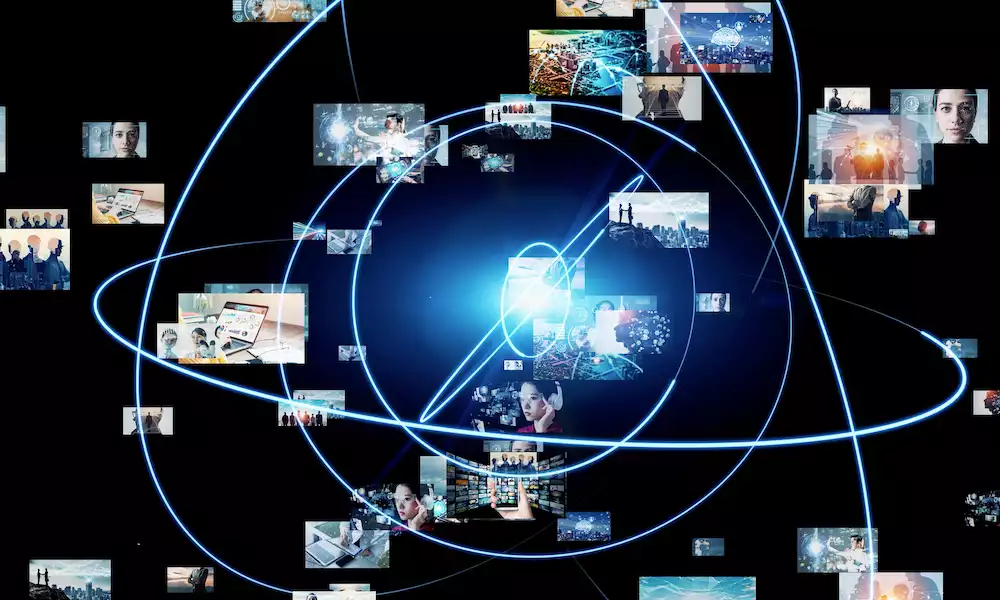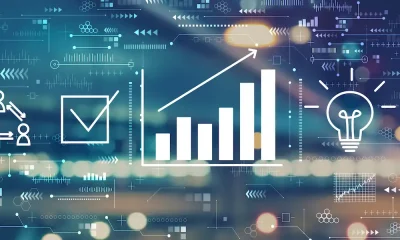Marketing
Generative AI vs. Traditional AI: What’s the Difference?

AI is divisive. On the one hand, workers feel threatened by it, and many wonder when it will impact their jobs. On the other hand, AI is exciting and invigorating businesses.
There are a couple of types of AI making inroads, namely Traditional AI and Generative AI. This business blog provides you with the basics so you are informed and can make essential choices for your business and career.
AI Explained
AI, or Artificial Intelligence, is the talk of the town due to its simulation of human intelligence in machines programmed to think and learn like humans. It involves the development of computer systems capable of performing tasks that typically require human intelligence, such as visual perception, speech recognition, decision-making, and problem-solving.
There are different types of AI based on their capabilities and functionalities. You may have experienced AI systems performing specific tasks in marketing or search. Or know of systems like ChatBots that use ML (machine learning) to understand, learn, and adapt to user questions.
If that wasn’t enough to accept, there is also Generative AI. You may be wondering what the difference is between traditional rule-based AI and generative AI. Let’s find out.
Understanding Traditional AI
Traditional AI, or rule-based AI, is designed to perform specific tasks based on pre-defined rules and algorithms.
Limited to the tasks it has been programmed to perform, Traditional AI cannot generate new content or adapt to new situations without additional programming.
As we mentioned earlier, this type of AI is commonly used in business to improve process and operational efficiencies.
Expect to find most industries today use traditional AI directly in their customized systems or apps or indirectly via SaaS subscription services.
Industries that have gone headfirst into using Traditional AI as much as possible across most functions of business include:
- Finance
- Healthcare
- Manufacturing
- Technology
- Retail
However, suppose your industry is not on the list. In that case, it won’t be long before it is, as all sectors are expected to be using AI in some capacity to automate processes and improve efficiency.
What Is Generative AI?
Generative AI, on the other hand, is designed to create new content or generate new ideas based on patterns and data it has learned.
Where will you find Generative AI in business? This type of AI is commonly used in the creative industries and sectors that create images, videos, and text content, including:
- Art
- Music
- Film
- Creative writing, literary composition
- Marketing and Advertising
- Fashion
- Architecture
Any industry that generates new content will be intrigued by what can be created with Generative AI.
What’s more, Generative AI can adapt to new situations and generate new content without additional programming, making it a powerful tool for creative industries.
Disruptive? Yes!
It’s not hard to imagine how disruptive this AI will be to jobs currently managed by mere humans! From creative directors to content writers – the writing is on the wall for many roles in sectors with slim margins, like Ad agencies, video production firms, and writers. Already, screenscript writers are reacting to the threat of AI writers like ChatGPT – and rightly so.
The Writers Guild of America says AI needs more regulation and wants it banned in the industry. Studios will not be allowed to use AI to write or rewrite content that would be done by human writers, nor should existing content be used to train AI.
Disruption is inevitable in all industries, and while screenwriters may have won the battle today, they won’t win it tomorrow. Disney’s CEO has said AI presents exciting opportunities and benefits to the company, and his competitors will be on the same page.
Managing staff expectations is the priority; however, watch this space; AI will soon be appearing in movies, advertising, or TV shows.
Applications of Generative AI
Generative AI has a wide range of applications in various industries.
Art
In art, generative AI can be used to create unique and original pieces of artwork. How long does it take an artist to create a painting? How long would it take for AI to make a similar amount of artwork? We don’t have the exact answer; however, if Generative AI is anything like Traditional AI, it will likely be a lot faster and cheaper than a human artist.
Music
In music, generative AI can be used to compose new pieces or generate new sounds. Would music lovers care if the song was written by AI instead of humans? There may be some resistance; however, music has already been disrupted with streaming and lists replacing artists’ albums, so a move to AI creation is not much of a massive leap for most listeners.
Writing
In writing, generative AI can generate new ideas for stories or even write entire articles. As mentioned earlier, content generation with AI writers has already created massive upheaval in industries that used to use human writers.
ChatGPT has much to answer for, with human site content creators struggling to secure new campaigns for articles, videos, images, and marketing material like email messages and social media posts.
Generative AI can also be used to create new designs and prototypes in the fashion, architecture, and product design industries. The possibilities for this exciting technology are endless, and it is constantly evolving.
The Future of Generative AI
However you feel about AI, the future of generative AI is bright, with many exciting possibilities. For publishers, the trap would be to use AI content and ditch human writers like journalists altogether.
However, as most news and views sites rely primarily on Google search traffic, they will need to rethink their use of AI writers as quality and relevancy rule. There are now AI detector apps to help sites get a good balance between AI and human content.
Google implies AI content can be used but not abused, so avoid relying on it as the mainstay of your content.
As AI technology evolves, we expect to see even more innovative applications in various industries. In healthcare, generative AI could be used to develop new drugs or disease treatments. In education, it could create personalized student learning experiences.
Generative AI could generate new product ideas or improve customer experiences in business.
With its ability to create unique and original content, generative AI will undoubtedly play a significant role in shaping the future of many industries and functions like marketing. Jobs will be lost; however, new roles will appear, especially for marketers with know-how in Web 3.0 technologies like the metaverse.
Key Difference
What is the critical difference between Generative AI and Traditional AI?
Traditional AI is designed to perform specific tasks based on pre-programmed rules and data. Generative AI is designed to create new content or ideas based on learned patterns and data.
Traditional AI is used in finance, healthcare, and manufacturing industries to automate processes and improve efficiency.
Generative AI will become prevalent in creative industries such as art, music, and writing to generate new content.






